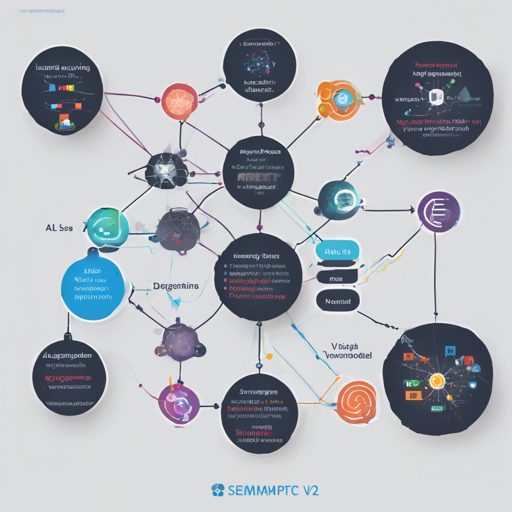The All MPNet Base Model (v2) is a powerful tool for converting sentences and paragraphs into a dense vector space, enabling effective semantic search and clustering. In this article, we will guide you through the steps to use the model seamlessly and troubleshoot common issues.
What You Need
- Python installed on your system.
- Access to install packages using pip.
- Basic understanding of Python programming.
Step-by-Step Usage
Using the Sentence-Transformers
First, ensure that you have the sentence-transformers library installed by executing the following command in your terminal:
pip install -U sentence-transformersNow, you can use the model as follows:
from sentence_transformers import SentenceTransformer
sentences = ["This is an example sentence", "Each sentence is converted"]
model = SentenceTransformer('sentence-transformers/all-mpnet-base-v2')
embeddings = model.encode(sentences)
print(embeddings)Using HuggingFace Transformers
If you prefer to use the model without sentence-transformers, you can do so with HuggingFace Transformers. Here’s how:
from transformers import AutoTokenizer, AutoModel
import torch
import torch.nn.functional as F
# Mean Pooling - Take attention mask into account for correct averaging
def mean_pooling(model_output, attention_mask):
token_embeddings = model_output[0] # First element contains all token embeddings
input_mask_expanded = attention_mask.unsqueeze(-1).expand(token_embeddings.size()).float()
return torch.sum(token_embeddings * input_mask_expanded, 1) / torch.clamp(input_mask_expanded.sum(1), min=1e-9)
# Sentences we want sentence embeddings for
sentences = ["This is an example sentence", "Each sentence is converted"]
# Load model from HuggingFace Hub
tokenizer = AutoTokenizer.from_pretrained('sentence-transformers/all-mpnet-base-v2')
model = AutoModel.from_pretrained('sentence-transformers/all-mpnet-base-v2')
# Tokenize sentences
encoded_input = tokenizer(sentences, padding=True, truncation=True, return_tensors='pt')
# Compute token embeddings
with torch.no_grad():
model_output = model(**encoded_input)
# Perform pooling
sentence_embeddings = mean_pooling(model_output, encoded_input['attention_mask'])
# Normalize embeddings
sentence_embeddings = F.normalize(sentence_embeddings, p=2, dim=1)
print("Sentence embeddings:")
print(sentence_embeddings)In this code, imagine you’re assembling a sandwich. The sentences are the ingredients: each one needs its own space to flavor the overall taste. The transformer model acts like a skilled chef, mixing just the right amount of ingredients (token embeddings) and controlling the cooking time (attention mask). The mean pooling function ensures that every bite is flavorful, averaging the inputs so that no flavor overpowers the others. Once cooked, the chef presents a beautifully crafted dish (sentence embeddings) that represents the essence of each ingredient!
Troubleshooting Common Issues
If you encounter issues while using the model, consider the following troubleshooting ideas:
- Ensure that all required packages are installed correctly. Running `pip install -U sentence-transformers` or `pip install transformers` should resolve issues related to missing libraries.
- Check that your input sentences do not exceed the maximum length. The model truncates longer sentences, which could lead to unexpected results.
- If you’re receiving errors related to CUDA or GPU settings, ensure you have the correct version of PyTorch installed and that it’s compatible with your GPU’s architecture.
- In case of any persistent issues, reach out for assistance or consult the documentation available at Sentence Embeddings Benchmark.
For more insights, updates, or to collaborate on AI development projects, stay connected with fxis.ai.
Conclusion
The All MPNet Base Model (v2) stands as a cutting-edge solution for semantic tasks. With the instructions above, you’re well-equipped to harness its power for clustering, similarity, or information retrieval tasks.
At fxis.ai, we believe that such advancements are crucial for the future of AI, as they enable more comprehensive and effective solutions. Our team is continually exploring new methodologies to push the envelope in artificial intelligence, ensuring that our clients benefit from the latest technological innovations.

